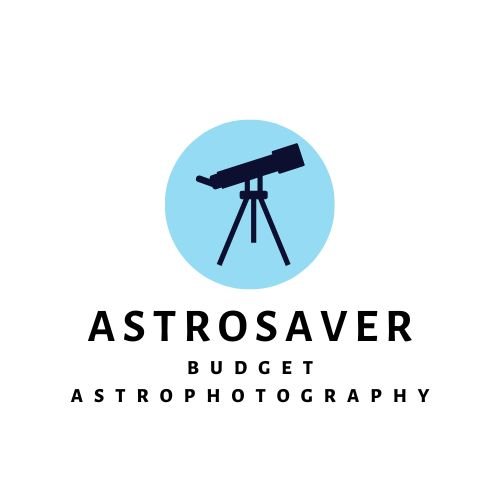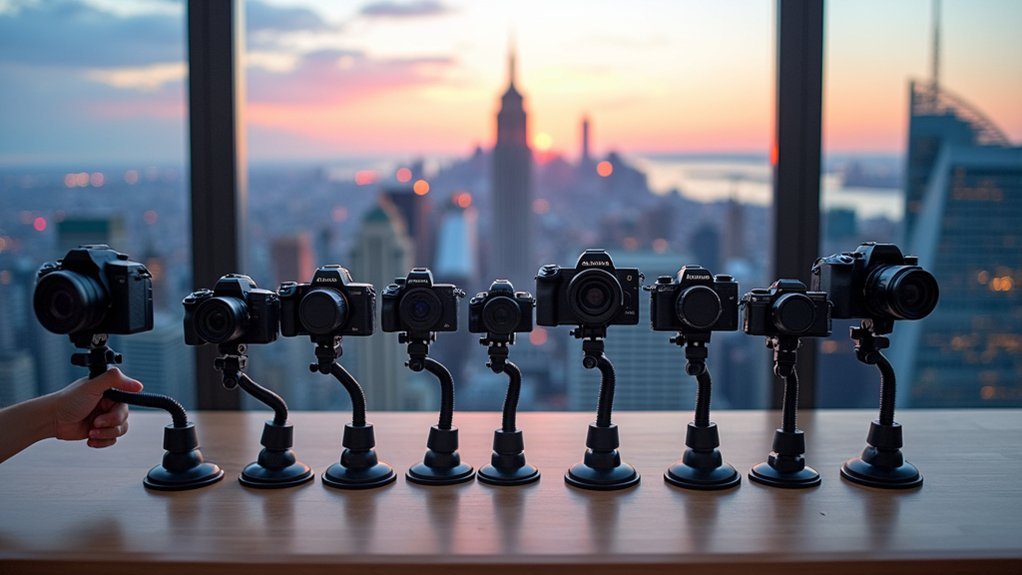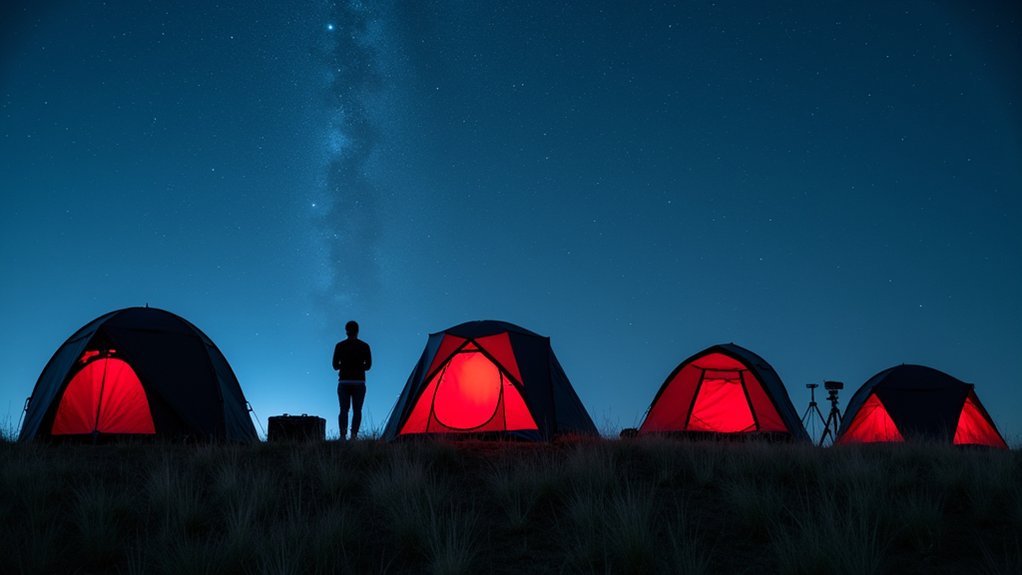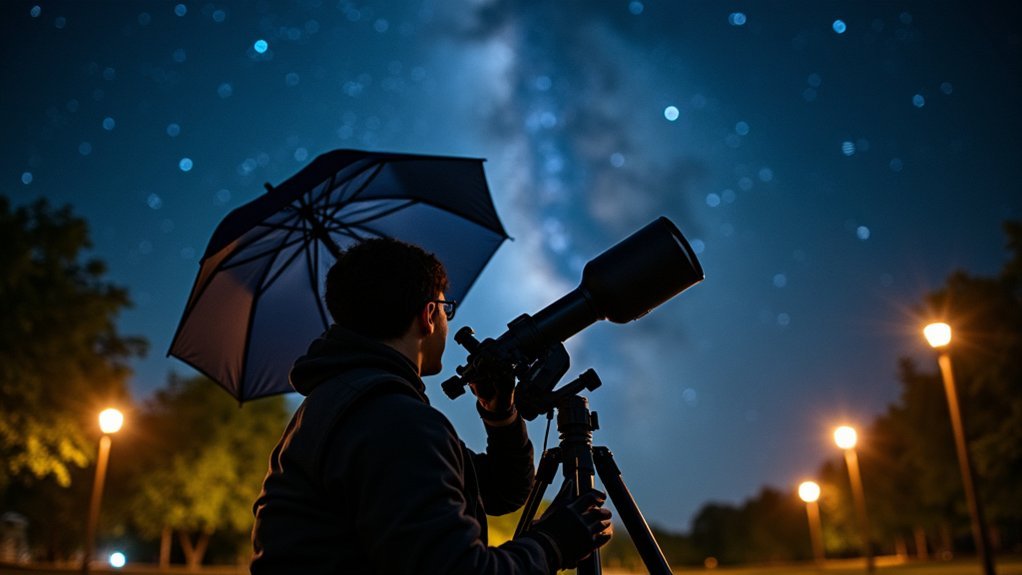To focus your refracting telescope, first align your finder scope, then start with a low-power eyepiece. Adjust the focuser slowly until stars appear sharp, not bloated. For precision, use a Bahtinov mask on a bright star and adjust until the diffraction pattern is symmetrical. Allow your telescope to acclimate to outdoor temperatures, and recheck focus throughout your session as temperatures change. Create an index scale on your focuser to quickly return to perfect focus with different accessories. These simple techniques will transform your viewing experience.
7 Simple Steps to Focus Your Refracting Telescope

When you’re ready to explore the night sky with your refracting telescope, proper focusing is essential for clear, detailed views. Start by aligning your telescope’s finder to guarantee you’re actually pointing at your intended target.
Begin with your longest focal length eyepiece, which provides lower magnification and a wider field of view, making initial focusing much easier. Once you’ve located your target, slowly adjust the focuser until you achieve a crisp, focused image.
Always start with your lowest power eyepiece—it offers a wider view and makes initial target acquisition and focusing significantly easier.
For precise focusing, especially at higher magnifications, consider using a Bahtinov mask. This specialized tool creates a distinctive diffraction pattern that makes it obvious when perfect focus is achieved.
Remember to check your focus periodically as temperature changes throughout your observing session can affect your optics’ performance.
Understanding Your Telescope’s Focuser Mechanism
The heart of your telescope’s focusing system lies in its focuser mechanism, which precisely adjusts the distance between your eyepiece and objective lens.
Most refractors use either a rack-and-pinion system with gears for incremental movement or a crayford design that utilizes friction for smooth adjustments.
Your focuser’s travel distance typically maxes out around 40mm, so it’s important to understand these limitations when attaching cameras or different eyepieces.
For ideal focus, consider the entire optical path length, including any extension tubes or T-rings you’re using with imaging equipment.
Regular maintenance guarantees consistent precise focusing performance.
Check that your focuser moves smoothly without slipping and remains properly aligned.
This simple upkeep will greatly enhance your viewing experience and help you achieve crisp, clear images of celestial objects.
Setting Up Proper Viewing Conditions for Focusing

Finding a stable viewing location free from vibration is essential for achieving a crisp focus with your telescope.
You’ll want to set up on solid ground away from foot traffic and position yourself to minimize wind interference that can cause telescope shake.
For ideal focusing results, choose nights with good atmospheric seeing conditions when there’s minimal turbulence in the air and humidity is low.
Stable Viewing Location
Securing a proper viewing location represents the foundation of successful telescope focusing. When setting up your refractor, you’ll need a stable surface away from artificial light sources that could interfere with your ability to achieve sharp focus.
Before beginning observations, allow your telescope to acclimate to the outdoor temperature—this prevents thermal distortions that blur celestial objects.
- Choose a level, solid area for your telescope setup to minimize vibrations that disrupt focusing attempts.
- Position yourself away from streetlights, porch lights, and other light pollution sources.
- Avoid windy locations where gusts can shake your equipment and make precise focusing impossible.
- Use a sturdy tripod or mount, ensuring all locking mechanisms are fully secured before attempting to focus.
Optimal Weather Conditions
Beyond securing a stable location, atmospheric conditions play a major role in your telescope focusing success. For ideal viewing conditions, prioritize clear skies with minimal turbulence, as these directly impact image clarity at higher magnifications.
| Condition | Impact | Solution |
|---|---|---|
| Humidity | Causes image distortion | Observe during low humidity nights |
| Temperature | Creates air currents | Allow telescope to acclimate to temperature (30+ minutes) |
| Light Pollution | Obscures faint objects | Seek dark locations away from urban areas |
Avoid dawn and dusk observations when atmospheric refraction is strongest, as this introduces additional blurriness. Temperature stability is essential—rapid changes create air currents that distort your view. The better your conditions, the easier it will be to achieve precise focus on celestial bodies and enjoy crisp, detailed observations.
Using the Bahtinov Mask for Precise Star Focus
Precision in astronomical observations hinges on achieving perfect focus, and the Bahtinov mask stands as a game-changer for amateur astronomers. This simple tool creates a distinctive Y-pattern when your telescope achieves perfect focus on a bright star, eliminating guesswork from your setup process.
- Attach the Bahtinov mask to the front of your refracting telescope.
- Center a bright star in your field of view.
- Adjust the focus knob until the Y-pattern appears symmetrical.
- Remove the mask and begin your observations or astrophotography.
For ideal results, check your focus periodically throughout your session, especially during temperature changes.
Whether you’ve purchased one from FarPoint Astro or crafted your own, this affordable focusing aid will dramatically improve your precise focusing capabilities and enhance your astrophotography results.
Achieving Perfect Focus With Digital Cameras

When attaching a digital camera to your refracting telescope, focus becomes even more demanding than with the Bahtinov mask method.
Position your camera’s sensor approximately 100mm behind the focuser to achieve ideal back focus distance. You’ll likely need extension tubes (at least 10mm) to compensate for limited focuser travel.
Make incremental focus adjustments using short test exposures until you achieve the sharpest possible image. Watch for changing seeing conditions that might affect clarity.
For serious astrophotography, consider investing in automated focusing systems with stepper motors to maintain consistent focus throughout your imaging session.
Don’t forget that temperature fluctuations can greatly impact your focus stability.
Check and recalibrate your focus settings periodically during longer sessions to guarantee your images remain tack-sharp despite thermal changes in your equipment.
Temperature Compensation Techniques for Night Sessions
During your nighttime stargazing sessions, you’ll need to maintain thermal equilibrium by allowing your telescope to acclimate for at least 30 minutes before making critical focus adjustments.
As temperatures drop, your lenses and tubes will contract, requiring you to check and readjust focus regularly—consider a stepper motor-driven focuser to automate these adjustments for astrophotography.
Don’t forget to implement dew prevention solutions such as lens heaters or shields, as moisture accumulation can greatly degrade image quality and compound focusing challenges.
Thermal Equilibrium Methods
As temperatures drop throughout your night observation session, your telescope’s optical performance can dramatically change without proper thermal management. Achieving thermal equilibrium is essential to minimize thermal distortion and maintain focus stability throughout your stargazing experience.
- Set up early – Allow your refractor to acclimate to ambient temperature for 30-60 minutes before observing to prevent image distortion.
- Apply gentle heat – Consider using a heating band around your objective lens to maintain consistent temperature and prevent dew formation.
- Monitor actively – Check focus regularly after temperature changes and be prepared to make fine adjustments to your focuser.
- Use technology – If available, enable your telescope’s temperature compensation feature to automatically adjust focus as the night grows colder.
Battling Lens Contraction
Temperature changes throughout your night observation can wreak havoc on your telescope’s focus if you’re not prepared. Lens contraction caused by cooling temperatures alters the optical path length, shifting your carefully achieved focus.
Allow your telescope to acclimate to the ambient temperature for at least 30 minutes before starting your session. Throughout the night, make regular focus adjustments using the focuser’s index scale for precision.
| Temperature Change | Required Action |
|---|---|
| Initial setup | 30-min acclimation period |
| Every 1-2 hours | Check focus, adjust as needed |
| Sudden drops | Immediate refocusing |
| Gradual cooling | Minor incremental adjustments |
| Dawn approaching | Final adjustment as temp rises |
Consider automated focusing systems with temperature compensation features for consistent results. Keeping a log of temperature fluctuations and corresponding adjustments will help you understand your telescope’s specific behavior patterns.
Dew Prevention Solutions
The three most frustrating enemies of telescope focus during night sessions are vibration, thermal expansion, and dew formation.
When moisture condenses on your objective lens, it can ruin your viewing experience completely. To prevent this common issue, implement these proven strategies:
- Install a dew shield on your telescope to maintain a temperature differential between your optics and the surrounding air.
- Apply heating elements or dew heaters around your objective lens to keep glass temperatures above the dew point.
- Monitor ambient temperature and humidity levels throughout your session, as rapid drops signal potential dew formation.
- Use a small fan to gently circulate air around your optics, preventing localized cooling that leads to condensation.
These techniques will keep your views crisp and your optics dry all night long.
Creating and Using an Index Scale for Repeatable Focus
One powerful technique that elevates your observation experience is creating an index scale for your telescope’s focuser. This simple addition allows you to make precise focus adjustments and return to ideal positions repeatedly.
Mark measurements in millimeters or microns on your focuser using a paper scale or dial attachment. Document specific positions for different eyepieces and astrophotography equipment in your observing log. You’ll quickly switch between setups without the frustration of refinding perfect focus.
A precisely calibrated focuser scale eliminates guesswork, letting you switch equipment with confidence while maintaining perfect focus.
Remember to check and recalibrate your scale during temperature changes, as thermal fluctuations affect focus position.
When using computerized focusing systems, your index scale provides valuable reference points for initial settings before automated fine-tuning takes over.
This small modification transforms your workflow, ensuring consistent, sharp views night after night.
Frequently Asked Questions
How to Focus a Telescope for Beginners?
You’ll focus your telescope by aligning the finder scope, starting with lowest magnification, adjusting the focus knob until images are sharp, then switching to higher power eyepieces as needed, refocusing each time.
How Does a Refractor Telescope Focus?
Your refractor telescope focuses by gathering light through the objective lens, bending it to converge at a focal point. You’ll adjust the focuser to move the eyepiece until the image appears sharp and clear.
How Can You Maximize the Magnification of a Refracting Telescope?
You can maximize magnification by using shorter focal length eyepieces, ensuring proper collimation, investing in high-quality eyepieces, observing during stable atmospheric conditions, and maintaining precise focus with tools like a Bahtinov mask.
How Do You Use a Telescope Step by Step?
You’ll first align your finder scope, then mount your telescope properly. Choose a low-power eyepiece, point at your target, and focus gradually. Increase magnification by changing eyepieces as needed, always refocusing afterward.
In Summary
You’ve now mastered the essential focusing techniques for your refractor. Remember, practice makes perfect—you’ll get faster each time. Don’t rush the process; take your time to achieve that crisp, clear image. By following these steps and utilizing tools like the Bahtinov mask, you’re well on your way to enjoying spectacular celestial views with your perfectly focused telescope.





Leave a Reply